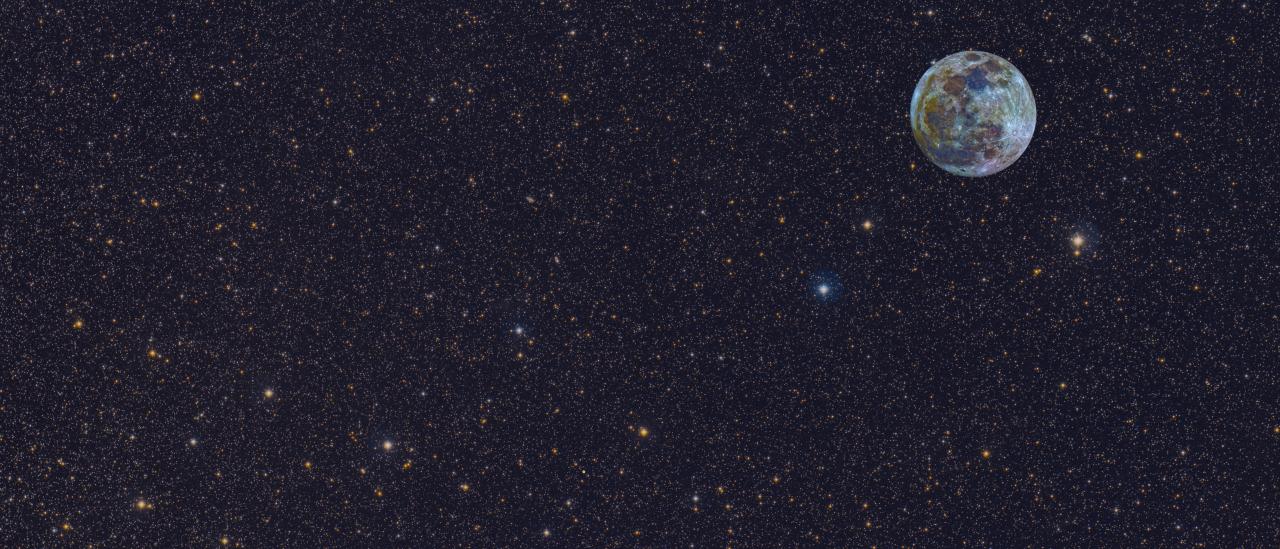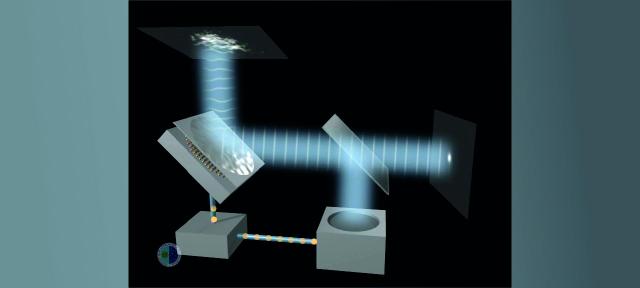Just over two decades ago, the existence of a planet outside the Solar System, 51 Pegasi, was confirmed for the first time, recently renamed Dimidium by the International Astronomical Union. One of the most fascinating results of astrophysics today is the discovery of thousands of other worlds orbiting other stars, which we call Exoplanets. Now we know that its formation and grouping in Exoplanetary Systems is very frequent, being found around most of the stars.
The image shows a region of the sky where almost 200,000 stars stand out! from the Milky Way disk. About half of the area was observed for years by the Kepler space telescope, detecting hundreds of exoplanets between 100 and 10,000 light-years (a.l.) away from us. The image shows, among others, the location of the Kepler 296 exoplanetary system, composed of at least 5 exoplanets.
This is the only image of the exhibition in which they have overlapped, maintaining their apparent sizes in the field of view of the Sky Treasure Chest Astragrapher (STC), the Moon and four planets (Venus, Jupiter, Saturn and Mars) for informative purposes. The Sun is also represented, although only in the illustrative image which, as can be seen, has an apparent size almost identical to that of the Moon. For this reason, annular or total solar eclipses are produced, depending mainly on the Earth-Moon distance at the time of the same.
The Moon is possibly the astronomical object of reference for humans. Thanks to this assembly it is possible to appreciate the area covered in the sky by each image of this exposure, equivalent to five and a half degrees per side or, which is the same, to ten Moons aligned. Using the Moon as the unit area, the images cover 100 "square" moons (10×10 or 102). If we wanted to visualize the celestial sphere at the scale of this exposure, we would need to obtain 1,364 images to cover it completely, having to place them 12 m away.
In the stellar map, between the constellations of the Swan, the Lyre and the Dragon, you can see the location and area covered in the sky by the exposed image, marked with a red square, as well as the area observed by the Kepler satellite in blue. The black dotted line indicates the location of the Milky Way disk, the image is the result of adding 5 exposures of 600s in each of the 3 wide filters R(red), G(green) and B(blue) with the Astragraph STC of the Communication and Scientific Culture Unit (UC3). Only in this image, images of the Moon have been superimposed in intensified real color (E. Mora) and images of the planets, all properly scaled. Author: D. López ©IAC
The image is the result of adding 5 exposures of 600s in each of the 3 wide filters R(red), G(green) and B(blue) with the Astragraph STC of the Communication and Scientific Culture Unit (UC3). Only in this image, images of the Moon have been superimposed in intensified real color (E. Mora) and images of the planets, all properly scaled.



